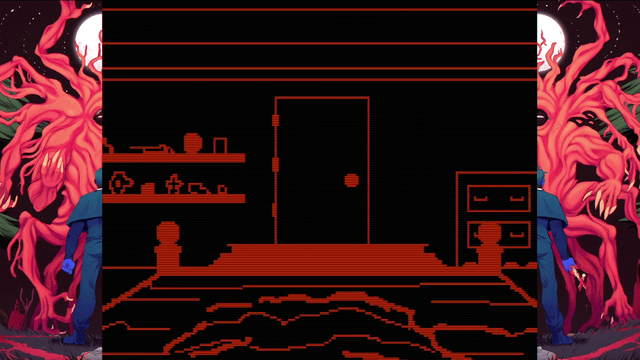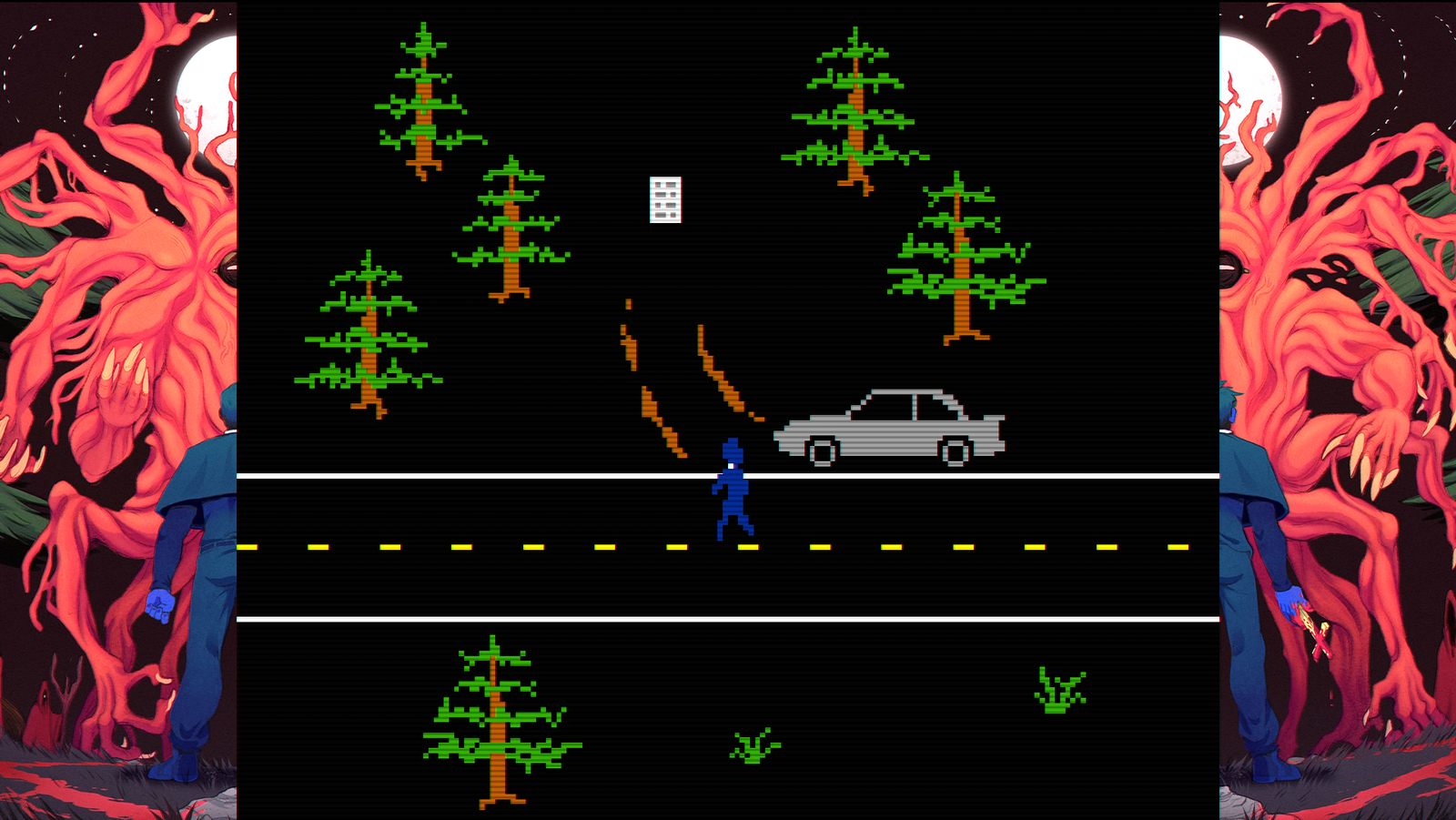Clearly inspired by The Exorcist and other films of the era, FAITH: The Unholy Trilogy’s story follows the life of a priest suffering a crisis of faith after participating in a tragically botched exorcism. It’s a story that is likely to resonate best with players who were raised in or around Catholicism, where participation may almost feel like a sin or could surprisingly go as far as causing you to reflect on, though not necessarily question, the strength of your own faith.
If you turn off the lights and let your imagination take over, FAITH may, in the best and worst ways, make you feel like you’re a part of a horrific urban legend in the making. While the game itself gives no such context, it’s easy to imagine stumbling across a mysterious Atari cartridge in a dusty old church basement, kicking off a horror plot reminiscent of films, literature, and propaganda born out of the 1980s Satanic Panic.

To say too much about FAITH would be to potentially spoil it’s magic, but I’ll do my best to paint the appropriate picture while preserving the specifics of its surprises for would-be players. That’s not to say that there are any big twists to be spoiled, rather that it’s best approached with minimal context. It’s a game that is, at first, amusing in its simplicity, but gives way to some very real apprehension, dread, and scares.
For the most part FAITH, a modern PC game, could have been made on an Atari 2600 with its protagonist, for example, represented in less than 80 pixels and just two colors. Likewise, its gameplay is restricted to eight directions of movement and a single action button. What’s impressive is how much its sole, independent developer Airdorf manages to convey within these limitations. It’s clear that he not only understands the construction and pacing of effective horror, but also the essential components of game design. It’s an interesting paradox that in the absence of extreme fidelity a game like FAITH can simultaneously need to be so deliberate and precise in its execution while also relying on the external emotional cooperation of the player to truly bring the game world to life. Almost every collection of pixels is masterfully crafted to evoke recognition from the player. When they aren’t, it’s an intentional choice, its contrast forcing us into a dreadful state of mind. Furthermore, the sound design works within similar restraint while managing to be just as surprising, using era-appropriate synthesized voices throughout to a deeply unnerving effect.

But Airdorf’s commitment to the old ways isn’t necessarily dogmatic, as he’s willing to use modern animation techniques and technology to create cutscenes that would not have been possible on a second generation console. As tension rises, the gameplay can switch from its jerky 8-bit motion to a scene that uses fluid rotoscope animation and miraculously manages to remain cohesive to the overall design; the sudden juxtaposition of detail further enhances the game’s horror and story.

Like almost everything, FAITH: The Unholy Trinity has its shortcomings, but the game is such an impressive achievement that they’re overshadowed to the point of being irrelevant. It’s a game that horror fans and developers should experience.
FAITH: The Unholy Trinity Screenshots
Screenshots captured from the FAITH: The Unholy Trinity on Windows
FAITH: The Unholy Trinity
Original Release: Episodically, starting in 2017
Developer(s): Airdorf Games
Publisher(s): New Blood Interactive
Platforms(s): Windows











